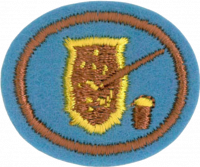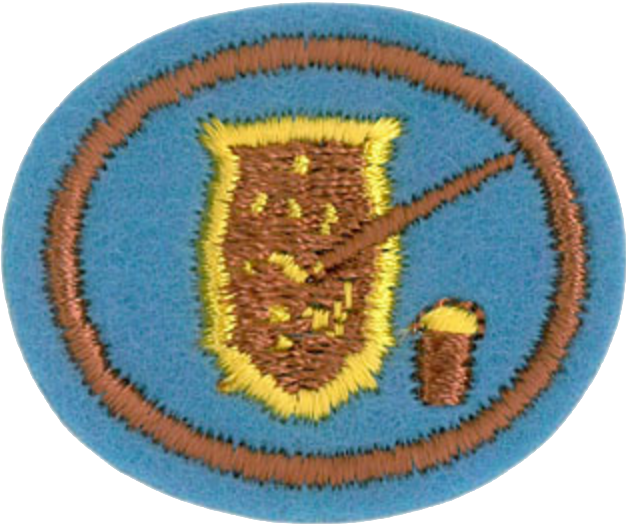Difference between revisions of "AY Honors/Découpage/Answer Key/es"
From Pathfinder Wiki
(Created page with "<noinclude>") |
(Updating to match new version of source page) |
||
| (6 intermediate revisions by one other user not shown) | |||
| Line 7: | Line 7: | ||
{{clear}} | {{clear}} | ||
| − | + | {{clear}} | |
| − | |||
| − | |||
| − | + | {{clear}} | |
| − | |||
| − | |||
<noinclude></noinclude> | <noinclude></noinclude> | ||
{{CloseReq}} <!-- 1 --> | {{CloseReq}} <!-- 1 --> | ||
{{ansreq|page={{#titleparts:{{PAGENAME}}|2|1}}|num=2}} | {{ansreq|page={{#titleparts:{{PAGENAME}}|2|1}}|num=2}} | ||
| − | <noinclude> | + | <noinclude></noinclude> |
| − | </noinclude> | + | <!-- 2. Hacer una lista de los materiales y equipos necesarios de découpage. --> |
| − | <!-- 2. | ||
| − | |||
| − | |||
| − | |||
| − | |||
| − | |||
| − | |||
| − | |||
| − | |||
| − | |||
| − | |||
| − | + | {{clear}} | |
| − | |||
| − | |||
| − | + | <noinclude></noinclude> | |
| − | <noinclude | ||
| − | |||
{{CloseReq}} <!-- 2 --> | {{CloseReq}} <!-- 2 --> | ||
{{ansreq|page={{#titleparts:{{PAGENAME}}|2|1}}|num=3}} | {{ansreq|page={{#titleparts:{{PAGENAME}}|2|1}}|num=3}} | ||
| − | <noinclude> | + | <noinclude></noinclude> |
| − | </noinclude> | + | <!-- 3. Describir la forma de preparar una madera o un objeto de metal para découpage. --> |
| − | <!-- 3. | ||
| − | |||
| − | + | {{clear}} | |
| − | |||
| − | |||
| − | + | <noinclude></noinclude> | |
| − | <noinclude | ||
| − | |||
{{CloseReq}} <!-- 3 --> | {{CloseReq}} <!-- 3 --> | ||
{{ansreq|page={{#titleparts:{{PAGENAME}}|2|1}}|num=4}} | {{ansreq|page={{#titleparts:{{PAGENAME}}|2|1}}|num=4}} | ||
| − | <noinclude> | + | <noinclude></noinclude> |
| − | </noinclude> | + | <!-- 4. Describir tres maneras en que un proceso de impresión se puede utilizar en découpage. --> |
| − | <!-- 4. | ||
| − | |||
| − | |||
| − | |||
| − | |||
| − | |||
| − | + | <noinclude></noinclude> | |
| − | <noinclude | ||
| − | |||
{{CloseReq}} <!-- 4 --> | {{CloseReq}} <!-- 4 --> | ||
{{ansreq|page={{#titleparts:{{PAGENAME}}|2|1}}|num=5}} | {{ansreq|page={{#titleparts:{{PAGENAME}}|2|1}}|num=5}} | ||
| − | <noinclude> | + | <noinclude></noinclude> |
| − | </noinclude> | + | <!-- 5. Utilizar los pasos básicos en la realización de dos de los siguientes objetos: --> |
| − | <!-- 5. | + | <noinclude></noinclude> |
| − | <noinclude | ||
| − | |||
{{ansreq|page={{#titleparts:{{PAGENAME}}|2|1}}|num=5a}} | {{ansreq|page={{#titleparts:{{PAGENAME}}|2|1}}|num=5a}} | ||
| − | <noinclude> | + | <noinclude></noinclude> |
| − | </noinclude | ||
| − | |||
| − | |||
| − | + | <noinclude></noinclude> | |
| − | <noinclude | ||
| − | |||
{{CloseReq}} <!-- 5a --> | {{CloseReq}} <!-- 5a --> | ||
{{ansreq|page={{#titleparts:{{PAGENAME}}|2|1}}|num=5b}} <!--T:11--> | {{ansreq|page={{#titleparts:{{PAGENAME}}|2|1}}|num=5b}} <!--T:11--> | ||
| − | <noinclude> | + | <noinclude></noinclude> |
| − | </noinclude> | + | <noinclude></noinclude> |
| − | <noinclude | ||
| − | |||
{{CloseReq}} <!-- 5b --> | {{CloseReq}} <!-- 5b --> | ||
{{ansreq|page={{#titleparts:{{PAGENAME}}|2|1}}|num=5c}} | {{ansreq|page={{#titleparts:{{PAGENAME}}|2|1}}|num=5c}} | ||
| − | <noinclude> | + | <noinclude></noinclude> |
| − | </noinclude> | + | <noinclude></noinclude> |
| − | <noinclude | ||
| − | |||
{{CloseReq}} <!-- 5c --> | {{CloseReq}} <!-- 5c --> | ||
{{ansreq|page={{#titleparts:{{PAGENAME}}|2|1}}|num=5d}} | {{ansreq|page={{#titleparts:{{PAGENAME}}|2|1}}|num=5d}} | ||
| − | <noinclude> | + | <noinclude></noinclude> |
| − | </noinclude> | + | <noinclude></noinclude> |
| − | <noinclude | ||
| − | |||
{{CloseReq}} <!-- 5d --> | {{CloseReq}} <!-- 5d --> | ||
{{ansreq|page={{#titleparts:{{PAGENAME}}|2|1}}|num=5e}} | {{ansreq|page={{#titleparts:{{PAGENAME}}|2|1}}|num=5e}} | ||
| − | <noinclude> | + | <noinclude></noinclude> |
| − | </noinclude> | + | <noinclude></noinclude> |
| − | <noinclude | ||
| − | |||
{{CloseReq}} <!-- 5e --> | {{CloseReq}} <!-- 5e --> | ||
{{ansreq|page={{#titleparts:{{PAGENAME}}|2|1}}|num=5f}} | {{ansreq|page={{#titleparts:{{PAGENAME}}|2|1}}|num=5f}} | ||
| − | <noinclude> | + | <noinclude></noinclude> |
| − | </noinclude> | + | <noinclude></noinclude> |
| − | <noinclude | ||
| − | |||
{{CloseReq}} <!-- 5f --> | {{CloseReq}} <!-- 5f --> | ||
{{CloseReq}} <!-- 5 --> | {{CloseReq}} <!-- 5 --> | ||
| − | <noinclude> | + | <noinclude></noinclude> |
| − | </noinclude> | + | ==Referencias== |
| − | == | + | <noinclude></noinclude> |
| − | |||
| − | <noinclude | ||
| − | |||
| − | |||
[[Category:Debug]] | [[Category:Debug]] | ||
{{CloseHonorPage}} | {{CloseHonorPage}} | ||
Latest revision as of 19:53, 13 July 2022
1
Explicar el significado y la historia de découpage.
2
Hacer una lista de los materiales y equipos necesarios de découpage.
3
Describir la forma de preparar una madera o un objeto de metal para découpage.
4
Describir tres maneras en que un proceso de impresión se puede utilizar en découpage.
5
Utilizar los pasos básicos en la realización de dos de los siguientes objetos:
5a
Impresión Modpodge
5b
Llavero
5c
Sujetalibros
5d
Botella
5e
Caja de servilletas/pañuelos
5f
Opción razonable


